Imaging modalities to inform the detection and diagnosis of early caries
- PMID: 33720395
- PMCID: PMC8441255
- DOI: 10.1002/14651858.CD014545
Imaging modalities to inform the detection and diagnosis of early caries
Abstract
Background: The detection and diagnosis of caries at the earliest opportunity is fundamental to the preservation of tooth tissue and maintenance of oral health. Radiographs have traditionally been used to supplement the conventional visual-tactile clinical examination. Accurate, timely detection and diagnosis of early signs of disease could afford patients the opportunity of less invasive treatment with less destruction of tooth tissue, reduce the need for treatment with aerosol-generating procedures, and potentially result in a reduced cost of care to the patient and to healthcare services.
Objectives: To determine the diagnostic accuracy of different dental imaging methods to inform the detection and diagnosis of non-cavitated enamel only coronal dental caries.
Search methods: Cochrane Oral Health's Information Specialist undertook a search of the following databases: MEDLINE Ovid (1946 to 31 December 2018); Embase Ovid (1980 to 31 December 2018); US National Institutes of Health Ongoing Trials Register (ClinicalTrials.gov, to 31 December 2018); and the World Health Organization International Clinical Trials Registry Platform (to 31 December 2018). We studied reference lists as well as published systematic review articles.
Selection criteria: We included diagnostic accuracy study designs that compared a dental imaging method with a reference standard (histology, excavation, enhanced visual examination), studies that evaluated the diagnostic accuracy of single index tests, and studies that directly compared two or more index tests. Studies reporting at both the patient or tooth surface level were included. In vitro and in vivo studies were eligible for inclusion. Studies that explicitly recruited participants with more advanced lesions that were obviously into dentine or frankly cavitated were excluded. We also excluded studies that artificially created carious lesions and those that used an index test during the excavation of dental caries to ascertain the optimum depth of excavation.
Data collection and analysis: Two review authors extracted data independently and in duplicate using a standardised data extraction form and quality assessment based on QUADAS-2 specific to the clinical context. Estimates of diagnostic accuracy were determined using the bivariate hierarchical method to produce summary points of sensitivity and specificity with 95% confidence regions. Comparative accuracy of different radiograph methods was conducted based on indirect and direct comparisons between methods. Potential sources of heterogeneity were pre-specified and explored visually and more formally through meta-regression.
Main results: We included 104 datasets from 77 studies reporting a total of 15,518 tooth sites or surfaces. The most frequently reported imaging methods were analogue radiographs (55 datasets from 51 studies) and digital radiographs (42 datasets from 40 studies) followed by cone beam computed tomography (CBCT) (7 datasets from 7 studies). Only 17 studies were of an in vivo study design, carried out in a clinical setting. No studies were considered to be at low risk of bias across all four domains but 16 studies were judged to have low concern for applicability across all domains. The patient selection domain had the largest number of studies judged to be at high risk of bias (43 studies); the index test, reference standard, and flow and timing domains were judged to be at high risk of bias in 30, 12, and 7 studies respectively. Studies were synthesised using a hierarchical bivariate method for meta-analysis. There was substantial variability in the results of the individual studies, with sensitivities that ranged from 0 to 0.96 and specificities from 0 to 1.00. For all imaging methods the estimated summary sensitivity and specificity point was 0.47 (95% confidence interval (CI) 0.40 to 0.53) and 0.88 (95% CI 0.84 to 0.92), respectively. In a cohort of 1000 tooth surfaces with a prevalence of enamel caries of 63%, this would result in 337 tooth surfaces being classified as disease free when enamel caries was truly present (false negatives), and 43 tooth surfaces being classified as diseased in the absence of enamel caries (false positives). Meta-regression indicated that measures of accuracy differed according to the imaging method (Chi2(4) = 32.44, P < 0.001), with the highest sensitivity observed for CBCT, and the highest specificity observed for analogue radiographs. None of the specified potential sources of heterogeneity were able to explain the variability in results. No studies included restored teeth in their sample or reported the inclusion of sealants. We rated the certainty of the evidence as low for sensitivity and specificity and downgraded two levels in total for risk of bias due to limitations in the design and conduct of the included studies, indirectness arising from the in vitro studies, and the observed inconsistency of the results.
Authors' conclusions: The design and conduct of studies to determine the diagnostic accuracy of methods to detect and diagnose caries in situ are particularly challenging. Low-certainty evidence suggests that imaging for the detection or diagnosis of early caries may have poor sensitivity but acceptable specificity, resulting in a relatively high number of false-negative results with the potential for early disease to progress. If left untreated, the opportunity to provide professional or self-care practices to arrest or reverse early caries lesions will be missed. The specificity of lesion detection is however relatively high, and one could argue that initiation of non-invasive management (such as the use of topical fluoride), is probably of low risk. CBCT showed superior sensitivity to analogue or digital radiographs but has very limited applicability to the general dental practitioner. However, given the high-radiation dose, and potential for caries-like artefacts from existing restorations, its use cannot be justified in routine caries detection. Nonetheless, if early incidental carious lesions are detected in CBCT scans taken for other purposes, these should be reported. CBCT has the potential to be used as a reference standard in diagnostic studies of this type. Despite the robust methodology applied in this comprehensive review, the results should be interpreted with some caution due to shortcomings in the design and execution of many of the included studies. Future research should evaluate the comparative accuracy of different methods, be undertaken in a clinical setting, and focus on minimising bias arising from the use of imperfect reference standards in clinical studies.
Copyright © 2021 The Cochrane Collaboration. Published by John Wiley & Sons, Ltd.
Conflict of interest statement
Tanya Walsh: none known. I am Statistical Editor with Cochrane Oral Health. Richard Macey: none known. Philip Riley: none known. I am Deputy Co‐ordinating Editor of Cochrane Oral Health. Anne‐Marie Glenny: none known. I am Joint Co‐ordinating Editor of Cochrane Oral Health. Falk Schwendicke: I have a conflict of interest when it comes to artificial intelligence (AI)‐based diagnostics. This, however, is beyond the remit of this review. Helen V Worthington: none know. I am Emeritus Co‐ordinating Editor of Cochrane Oral Health. Janet E Clarkson: none known. I am Joint Co‐ordinating Editor of Cochrane Oral Health. David Ricketts: none known. Ting‐Li Su: none known. Anita Sengupta: none known.
Figures

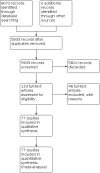


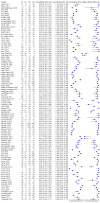
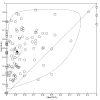
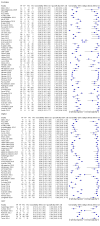
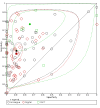

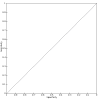
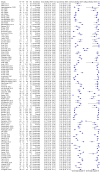
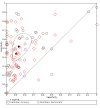
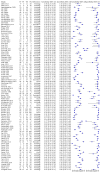
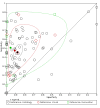
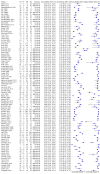
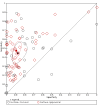

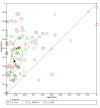
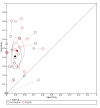
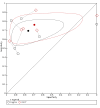
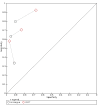

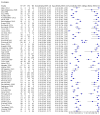


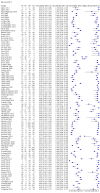
Similar articles
-
Visual or visual-tactile examination to detect and inform the diagnosis of enamel caries.Cochrane Database Syst Rev. 2021 Jun 14;6(6):CD014546. doi: 10.1002/14651858.CD014546. Cochrane Database Syst Rev. 2021. PMID: 34124773 Free PMC article.
-
Transillumination and optical coherence tomography for the detection and diagnosis of enamel caries.Cochrane Database Syst Rev. 2021 Jan 27;1(1):CD013855. doi: 10.1002/14651858.CD013855. Cochrane Database Syst Rev. 2021. PMID: 33502759 Free PMC article.
-
Electrical conductance for the detection of dental caries.Cochrane Database Syst Rev. 2021 Mar 16;3(3):CD014547. doi: 10.1002/14651858.CD014547. Cochrane Database Syst Rev. 2021. PMID: 33724442 Free PMC article.
-
Fluorescence devices for the detection of dental caries.Cochrane Database Syst Rev. 2020 Dec 8;12(12):CD013811. doi: 10.1002/14651858.CD013811. Cochrane Database Syst Rev. 2020. PMID: 33319353 Free PMC article.
-
Tests to detect and inform the diagnosis of root caries.Cochrane Database Syst Rev. 2020 Dec 7;12(12):CD013806. doi: 10.1002/14651858.CD013806. Cochrane Database Syst Rev. 2020. PMID: 33284484 Free PMC article.
Cited by
-
The Use of Artificial Intelligence in Caries Detection: A Review.Bioengineering (Basel). 2024 Sep 18;11(9):936. doi: 10.3390/bioengineering11090936. Bioengineering (Basel). 2024. PMID: 39329679 Free PMC article. Review.
-
The application of deep learning in early enamel demineralization detection.PeerJ. 2025 Jan 2;13:e18593. doi: 10.7717/peerj.18593. eCollection 2025. PeerJ. 2025. PMID: 39763696 Free PMC article.
-
Enamel Caries Detection and Diagnosis: An Analysis of Systematic Reviews.J Dent Res. 2022 Mar;101(3):261-269. doi: 10.1177/00220345211042795. Epub 2021 Oct 12. J Dent Res. 2022. PMID: 34636266 Free PMC article.
-
Using AI in Optimizing Oral and Dental Diagnoses-A Narrative Review.Diagnostics (Basel). 2024 Dec 13;14(24):2804. doi: 10.3390/diagnostics14242804. Diagnostics (Basel). 2024. PMID: 39767164 Free PMC article. Review.
-
Use of Digital Diagnostic Aids for Initial Caries Detection: A Review.Dent J (Basel). 2023 Sep 28;11(10):232. doi: 10.3390/dj11100232. Dent J (Basel). 2023. PMID: 37886917 Free PMC article. Review.
References
References to studies included in this review
Abesi 2012 {published data only}
Apostolopoulou 2009 {published data only}
-
- Apostolopoulou D, Lagouvardos P, Kavvadia K, Papagiannoulis L. Histological validation of a laser fluorescence device for occlusal caries detection in primary molars. European Archives of Paediatric Dentistry 2009;10 Suppl 1:11-5. - PubMed
Ariji 1998 {published data only}
-
- Ariji Y, Takahashi JI, Matsui O, Okano T, Naitoh M, Yuasa H, et al. In vitro comparison of subjective image quality of the Pana Digital intraoral x-ray imaging system and conventional intraoral radiography in caries detection. Oral Radiology 1998;14(2):75-83.
Ariji 1998a {published data only}
-
- Ariji Y, Takahashi JI, Matsui O, Okano T, Naitoh M, Yuasa H, et al. In vitro comparison of subjective image quality of the Pana Digital intraoral x-ray imaging system and conventional intraoral radiography in caries detection. Oral Radiology 1998;14(2):75-83.
Ashley 1998 {published data only}
-
- Ashley PF, Blinkhorn AS, Davies RM. Occlusal caries diagnosis: an in vitro histological validation of the electronic caries monitor (ECM) and other methods. Journal of Dentistry 1998;26(2):83-8. - PubMed
Astvaldsdottir 2012 {published data only}
Attrill 2001 {published data only}
-
- Attrill DC, Ashley PF. Occlusal caries detection in primary teeth: a comparison of DIAGNOdent with conventional methods. British Dental Journal 2001;190:440-3. - PubMed
Bahrololoomi 2015 {published data only}
Behere 2011 {published data only}
-
- Behere RR, Lele SM. Reliability of Logicon caries detector in the detection and depth assessment of dental caries: an in vitro study. Indian Journal of Dental Research 2011;22(2):362. - PubMed
Braga 2009 {published data only}
-
- Braga MM, Morais CC, Nakama RCS, Leamari VM, Siqueira WL, Mendes FM. In vitro performance of methods of approximal caries detection in primary molars. Oral Surgery, Oral Medicine, Oral Pathology, Oral Radiology, and Endodontics 2009;108(4):e35-41. - PubMed
Braun 2017 {published data only}
-
- Braun A, Guiraud LM, Frankenberger R. Histological validation of ICDAS II and radiological assessment of occlusal carious lesions in permanent teeth. Odontology 2017;105(1):46-53. - PubMed
Bussaneli 2015 {published data only}
-
- Bussaneli DG, Restrepo M, Boldieri T, Pretel H, Mancini MW, Santos-Pinto L, et al. Assessment of a new infrared laser transillumination technology (808 nm) for the detection of occlusal caries - an in vitro study. Lasers in Medical Science 2015;30(7):1873-9. - PubMed
Bussaneli 2015a {published data only}
-
- Bussaneli DG, Boldieri T, Diniz MB, Rivera LM, Santos-Pinto L, Cordeiro Rde C. Influence of professional experience on detection and treatment decision of occlusal caries lesions in primary teeth. International Journal of Paediatric Dentistry 2015;25(6):418-27. - PubMed
Cinar 2013 {published data only}
Costa 2002 {published data only}
-
- Costa AM, Yamaguti PM, De Paula LM, Bezerra AC. In vitro study of laser diode 655 nm diagnosis of occlusal caries. ASDC Journal of Dentistry for Children 2002;69(3):249-53, 233. - PubMed
Da Silva 2010 {published data only}
Diniz 2010 {published data only}
-
- Diniz MB, Rodrigues JA, Neuhaus KW, Cordeiro RC, Lussi A. Influence of examiner's clinical experience on the reproducibility and accuracy of radiographic examination in detecting occlusal caries. Clinical Oral Investigations 2010;14(5):515-23. - PubMed
Diniz 2011 {published data only}
-
- Diniz MB, Lima LM, Eckert G, Zandona AG, Cordeiro RC, Pinto LS. In vitro evaluation of ICDAS and radiographic examination of occlusal surfaces and their association with treatment decisions. Operative Dentistry 2011;36(2):133-42. - PubMed
Diniz 2012 {published data only}
-
- Diniz MB, Boldieri T, Rodrigues JA, Santos-Pinto L, Lussi A, Cordeiro RC. The performance of conventional and fluorescence-based methods for occlusal caries detection: an in vivo study with histologic validation. Journal of the American Dental Association 2012;143(4):339-50. - PubMed
Ekstrand 2011 {published data only}
-
- Ekstrand KR, Luna LE, Promisiero L, Cortes A, Cuevas S, Reyes JF, et al. The reliability and accuracy of two methods for proximal caries detection and depth on directly visible proximal surfaces: an in vitro study. Caries Research 2011;45(2):93-9. - PubMed
Erten 2005 {published data only}
-
- Erten H, Akarslan ZZ, Topuz O. The efficiency of three different films and radiovisiography in detecting approximal carious lesions. Quintessence International 2005;36(1):65-70. - PubMed
Espelid 1986 {published data only}
-
- Espelid I, Tveit AB. Clinical and radiographic assessment of approximal carious lesions. Acta Odontologica Scandinavica 1986;44(1):31-7. - PubMed
Firestone 1998 {published data only}
-
- Firestone AR, Sema D, Heaven TJ, Weems RA. The effect of a knowledge-based, image analysis and clinical decision support system on observer performance in the diagnosis of approximal caries from radiographic images. Caries Research 1998;32(2):127-34. - PubMed
Freitas 2016 {published data only}
-
- Freitas LA, Santos MT, Guaré RO, Lussi A, Diniz MB. Association between visual inspection, caries activity status, and radiography with treatment decisions on approximal caries in primary molars. Pediatric Dentistry 2016;38(2):140-7. - PubMed
Goel 2009 {published data only}
-
- Goel A, Chawla HS, Gauba K, Goyal A. Comparison of validity of DIAGNOdent with conventional methods for detection of occlusal caries in primary molars using the histological gold standard: an in vivo study. Journal of the Indian Society of Pedodontics and Preventive Dentistry 2009;27(4):227-34. - PubMed
Haak 2003 {published data only}
-
- Haak R, Wicht MJ, Nowak G, Hellmich M. Influence of displayed image size on radiographic detection of approximal caries. Dento Maxillo Facial Radiology 2003;32(4):242-6. - PubMed
Haiter‐Neto 2007 {published data only}
-
- Haiter-Neto F, dos Anjos Pontual A, Frydenberg M, Wenzel A. A comparison of older and newer versions of intraoral digital radiography systems: diagnosing non-cavitated proximal carious lesions. Journal of the American Dental Association 2007;138(10):1353-9. - PubMed
Haiter‐Neto 2008 {published data only}
-
- Haiter-Neto F, dos Anjos Pontual A, Frydenberg M, Wenzel A. Detection of non-cavitated approximal caries lesions in digital images from seven solid-state receptors with particular focus on task-specific enhancement filters. An ex vivo study in human teeth. Clinical Oral Investigations 2008;12(3):217-23. - PubMed
Haiter‐Neto 2009 {published data only}
-
- Haiter-Neto F, Casanova MS, Frydenberg M, Wenzel A. Task-specific enhancement filters in storage phosphor images from the Vistascan system for detection of proximal caries lesions of known size. Oral Surgery, Oral Medicine, Oral Pathology, Oral Radiology, and Endodontics 2009;107(1):116-21. - PubMed
Hintze 1996 {published data only}
-
- Hintze H, Christoffersen L, Wenzel A. In vitro comparison of Kodak Ultra-speed, Ektaspeed, and Ektaspeed Plus, and Agfa M2 Comfort dental x-ray films for the detection of caries. Oral Surgery, Oral Medicine, Oral Pathology, Oral Radiology, and Endodontics 1996;81(2):240-4. - PubMed
Hintze 2003 {published data only}
-
- Hintze H, Wenzel A. Diagnostic outcome of methods frequently used for caries validation. A comparison of clinical examination, radiography and histology following hemisectioning and serial tooth sectioning. Caries Research 2003;37(2):115-24. - PubMed
Huysmans 1997 {published data only}
-
- Huysmans MC, Hintze H, Wenzel A. Effect of exposure time on in vitro caries diagnosis using the Digora system. European Journal of Oral Sciences 1997;105(1):15-20. - PubMed
Isidor 2009 {published data only}
-
- Isidor S, Faaborg-Andersen M, Hintze H, Kirkevang LL, Frydenberg M, Haiter-Neto F, et al. Effect of monitor display on detection of approximal caries lesions in digital radiographs. Dento Maxillo Facial Radiology 2009;38(8):537-41. - PubMed
Jablonski‐Momeni 2012 {published data only}
Jablonski‐Momeni 2017 {published data only}
Kalathingal 2007 {published data only}
-
- Kalathingal SM, Mol A, Tyndall DA, Caplan DJ, Hill C. In vitro assessment of cone beam local computed tomography for proximal caries detection. Oral Surgery, Oral Medicine, Oral Pathology, Oral Radiology, and Endodontics 2007;104(5):699-704. - PubMed
Ko 2015 {published data only}
-
- Ko HY, Kang SM, Kim HE, Kwon HK, Kim BI. Validation of quantitative light-induced fluorescence-digital (QLF-D) for the detection of approximal caries in vitro. Journal of Dentistry 2015;43(5):568-75. - PubMed
Kockanat 2017 {published data only}
-
- Kockanat A, Unal M. In vivo and in vitro comparison of ICDAS II, DIAGNOdent pen, CarieScan PRO and SoproLife camera for occlusal caries detection in primary molar teeth. European Journal of Paediatric Dentistry 2017;18(2):99-104. - PubMed
Kucukyilmaz 2015 {published data only}
-
- Kucukyilmaz E, Sener Y, Botsali MS. In vivo and in vitro performance of conventional methods, DIAGNOdent, and an electronic caries monitor for occlusal caries detection in primary teeth. Pediatric Dentistry 2015;37(4):E14-22. - PubMed
Kulczyk 2014 {published data only}
Kutcher 2006 {published data only}
-
- Kutcher MJ, Kalathingal S, Ludlow JB, Abreu M Jr, Platin E. The effect of lighting conditions on caries interpretation with a laptop computer in a clinical setting. Oral Surgery, Oral Medicine, Oral Pathology, Oral Radiology, and Endodontics 2006;102(4):537-43. - PubMed
Lazarchik 1995 {published data only}
-
- Lazarchik DA, Firestone AR, Heaven TJ, Filler SJ, Lussi A. Radiographic evaluation of occlusal caries: effect of training and experience. Caries Research 1995;29(5):355-8. - PubMed
Lussi 2006 {published data only}
-
- Lussi A, Hack A, Hug I, Heckenberger H, Megert B, Stich H. Detection of approximal caries with a new laser fluorescence device. Caries Research 2006;40(2):97-103. - PubMed
Matos 2011 {published data only}
-
- Matos R, Novaes TF, Braga MM, Siqueira WL, Duarte DA, Mendes FM. Clinical performance of two fluorescence-based methods in detecting occlusal caries lesions in primary teeth. Caries Research 2011;45(3):294-302. - PubMed
Mendes 2006 {published data only}
-
- Mendes FM, Ganzerla E, Nunes AF, Puig AV, Imparato JC. Use of high-powered magnification to detect occlusal caries in primary teeth. American Journal of Dentistry 2006;19(1):19-22. - PubMed
Mialhe 2003 {published data only}
-
- Mialhe FL, Pereira AC, Pardi V, Castro Meneghim M. Comparison of three methods for detection of carious lesions in proximal surfaces versus direct visual examination after tooth separation. Journal of Clinical Pediatric Dentistry 2003;28(1):59-62. - PubMed
Mitropoulos 2010 {published data only}
-
- Mitropoulos P, Rahiotis C, Stamatakis H, Kakaboura A. Diagnostic performance of the visual caries classification system ICDAS II versus radiography and micro-computed tomography for proximal caries detection: an in vitro study. Journal of Dentistry 2010;38(11):859-67. - PubMed
Mortensen 2018 {published data only}
-
- Mortensen D, Hessing-Olsen I, Ekstrand KR, Twetman S. In vivo performance of impedance spectroscopy, laser fluorescence, and bitewing radiographs for occlusal caries detection. Quintessence International 2018;49(4):293-9. - PubMed
NCT02657538 {published data only}
-
- NCT02657538. Validation of near-infrared light transillumination for interproximal enamel caries detection [Validation of near-infrared light transillumination for interproximal enamel caries detection: a clinical controlled trial]. clinicaltrials.gov/ct2/show/NCT02657538 (first received 18 January 2016).
Neuhaus 2011 {published data only}
-
- Neuhaus KW, Rodrigues JA, Hug I, Stich H, Lussi A. Performance of laser fluorescence devices, visual and radiographic examination for the detection of occlusal caries in primary molars. Clinical Oral Investigations 2011;15(5):635-41. - PubMed
Novaes 2009 {published data only}
-
- Novaes TF, Matos R, Braga MM, Imparato JC, Raggio DP, Mendes FM. Performance of a pen-type laser fluorescence device and conventional methods in detecting approximal caries lesions in primary teeth - in vivo study. Caries Research 2009;43(1):36-42. - PubMed
Novaes 2010 {published data only}
-
- Novaes TF, Matos R, Raggio DP, Imparato JC, Braga MM, Mendes FM. Influence of the discomfort reported by children on the performance of approximal caries detection methods. Caries Research 2010;44(5):465-71. - PubMed
Novaes 2012 {published data only}
-
- Novaes TF, Matos R, Celiberti P, Braga MM, Mendes FM. The influence of interdental spacing on the detection of proximal caries lesions in primary teeth. Brazilian Oral Research 2012;26(4):293-9. - PubMed
Novaes 2012a {published data only}
-
- Novaes TF, Matos R, Gimenez T, Braga MM, DE Benedetto MS, Mendes FM. Performance of fluorescence-based and conventional methods of occlusal caries detection in primary molars - an in vitro study. International Journal of Paediatric Dentistry 2012;22(6):459-66. - PubMed
Pakkala 2012 {published data only}
-
- Pakkala T, Kuusela L, Ekholm M, Wenzel A, Haiter-Neto F, Kortesniemi M. Effect of varying displays and room illuminance on caries diagnostic accuracy in digital dental radiographs. Caries Research 2012;46(6):568-74. - PubMed
Pontual 2010 {published data only}
Ramezani 2016 {published data only}
-
- Ramezani L, Salemi F, Shokri A, Sichani HF, Mirzayi M, Bagheri M. A comparative study of the diagnostic accuracy of cone beam computed tomography and phosphor storage plate for detection of noncavitated occlusal caries. Dental and Medical Problems 2016;53:186–92.
Rathore 2012 {published data only}
Rocha 2003 {published data only}
-
- Rocha RO, Ardenghi TM, Oliveira LB, Rodrigues CR, Ciamponi AL. In vivo effectiveness of laser fluorescence compared to visual inspection and radiography for the detection of occlusal caries in primary teeth. Caries Research 2003;37(6):437-41. - PubMed
Rockenbach 2008 {published data only}
-
- Rockenbach MI, Veeck EB, da Costa NP. Detection of proximal caries in conventional and digital radiographs: an in vitro study. Stomatologija 2008;10(4):115-20. - PubMed
Rodrigues 2008 {published data only}
-
- Rodrigues JA, Hug I, Diniz MB, Lussi A. Performance of fluorescence methods, radiographic examination and ICDAS II on occlusal surfaces in vitro. Caries Research 2008;42(4):297-304. - PubMed
Safi 2015 {published data only}
Schulze 2004 {published data only}
-
- Schulze RK, Nackat D, D'Hoedt B. In vitro carious lesion detection on D-, E-, and F-speed radiographic films. Oral Surgery, Oral Medicine, Oral Pathology, Oral Radiology, and Endodontics 2004;97(4):529-34. - PubMed
Schulze 2008 {published data only}
-
- Schulze RK, Richter A, d'Hoedt B. The effect of wavelet and discrete cosine transform compression of digital radiographs on the detection of subtle proximal caries. ROC analysis. Caries Research 2008;42(5):334-9. - PubMed
Senel 2010 {published data only}
Shimada 2014 {published data only}
-
- Shimada Y, Nakagawa H, Sadr A, Wada I, Nakajima M, Nikaido T, et al. Non-invasive cross-sectional imaging of proximal caries using swept-source optical coherence tomography (SS-OCT) in vivo. Journal of Biophotonics 2014;7(7):506-13. - PubMed
Simon 2016 {published data only}
Souza 2013 {published data only}
-
- Souza JF, Boldieri T, Diniz MB, Rodrigues JA, Lussi A, Cordeiro RC. Traditional and novel methods for occlusal caries detection: performance on primary teeth. Lasers in Medical Science 2013;28(1):287-95. - PubMed
Souza 2014 {published data only}
-
- Souza JF, Diniz MB, Boldieri T, Rodrigues JA, Lussi A, Cássia Loiola Cordeiro R. In vitro performance of a pen-type laser fluorescence device and bitewing radiographs for approximal caries detection in permanent and primary teeth. Indian Journal of Dental Research 2014;25(6):702-10. - PubMed
Souza 2018 {published data only}
Soviero 2012 {published data only}
-
- Soviero VM, Leal SC, Silva RC, Azevedo RB. Validity of MicroCT for in vitro detection of proximal carious lesions in primary molars. Journal of Dentistry 2012;40(1):35-40. - PubMed
Svanaes 2000 {published data only}
-
- Svanaes DB, Moystad A, Larheim TA. Approximal caries depth assessment with storage phosphor versus film radiography. Evaluation of the caries-specific Oslo enhancement procedure. Caries Research 2000;34(6):448-53. - PubMed
Tarim 2014 {published data only}
-
- Tarim Ertas E, Kucukyilmaz E, Ertas H, Savas S, Yircali Atici M. A comparative study of different radiographic methods for detecting occlusal caries lesions. Caries Research 2014;48(6):566-74. - PubMed
Tonkaboni 2019 {published data only}
-
- Tonkaboni A, Saffarpour A, Aghapourzangeneh F, Fard MJK. Comparison of diagnostic effects of infrared imaging and bitewing radiography in proximal caries of permanent teeth. Lasers in Medical Science 2019;34(5):873-9. - PubMed
Virajsilp 2005 {published data only}
-
- Virajsilp V, Thearmontree A, Aryatawong S, Paiboonwarachat D. Comparison of proximal caries detection in primary teeth between laser fluorescence and bitewing radiography. Pediatric Dentistry 2005;27(6):493-9. - PubMed
Wenzel 2002 {published data only}
-
- Wenzel A, Hintze H, Kold LM, Kold S. Accuracy of computer-automated caries detection in digital radiographs compared with human observers. European Journal of Oral Sciences 2002;110(3):199-203. - PubMed
Xavier 2011 {published data only}
References to studies excluded from this review
Abdinian 2015 {published data only}
Abdinian 2017 {published data only}
Abdinian 2018 {published data only}
Alomari 2014 {published data only}
-
- Alomari QD, Qudeimat MA, Ghayyath AA. Imaging of occlusal dentine caries: a comparison among conventional radiographs, digital radiographs, and cone-beam computed tomography images. Oral Radiology 2014;31(2):73-80.
Alomari 2015 {published data only}
-
- Alomari QD, Qudeimat MA, Khalaf ME, Al-Tarakemah Y. The effect of combining radiographs and DIAGNOdent with visual examination on detection and treatment decisions of non-cavitated occluso-dentinal caries. Operative Dentistry 2015;40(3):313-21. - PubMed
Arslan 2014 {published data only}
Berkhout 2007 {published data only}
-
- Berkhout WE, Verheij JG, Syriopoulos K, Li G, Sanderink GC, Stelt PF. Detection of proximal caries with high-resolution and standard resolution digital radiographic systems. Dento Maxillo Facial Radiology 2007;36(4):204-10 [Erratum appears in Dento Maxillo Facial Radiology 2007;36(6):374-5]. - PubMed
Blazejewska 2016 {published data only}
-
- Blazejewska A, Dacyna N, Niesiobedzki P. Comparison of the detection of proximal caries in children and youth using DIAGNOcam and bitewing radiovisiography. Dental and Medical Problems 2016;53(7):468-75.
Bussaneli 2015c {published data only}
-
- Bussaneli DG, Restrepo M, Boldieri T, Albertoni TH, Santos-Pinto L, Cordeiro RCL. Proximal caries lesion detection in primary teeth: does this justify the association of diagnostic methods? Lasers in Medical Science 2015;30(9):2239-44. - PubMed
Chawla 2012 {published data only}
-
- Chawla N, Messer LB, Adams GG, Manton DJ. An in vitro comparison of detection methods for approximal carious lesions in primary molars. Caries Research 2012;46:161-9. - PubMed
Cortes 2000 {published data only}
-
- Cortes DF, Ekstrand KR, Elias-Boneta AR, Ellwood RP. An in vitro comparison of the ability of fibre-optic transillumination, visual inspection and radiographs to detect occlusal caries and evaluate lesion depth. Caries Research 2000;34(6):443-7. - PubMed
Coutinho 2014 {published data only}
-
- Coutinho TC, daRocha Costa C. An in vivo comparison of radiographic and clinical examination with separation for assessment of approximal caries in primary teeth. European Journal of Paediatric Dentistry 2014;15(4):371-4. - PubMed
da Silva Neto 2008 {published data only}
-
- da Silva Neto JM, dos Santos RL, Sampaio MC, Sampaio FC, Passos IA. Radiographic diagnosis of incipient proximal caries: an ex-vivo study. Brazilian Dental Journal 2008;19(2):97-102. - PubMed
Dehghani 2017 {published data only}
Diniz 2016 {published data only}
-
- Diniz MB, Cordeiro RC, Ferreira-Zandona AG. Detection of caries around amalgam restorations on approximal surfaces. Operative Dentistry 2016;41(1):34-43. - PubMed
Espelid 1994 {published data only}
-
- Espelid I, Tveit AB, Fjelltveit A. Variations among dentists in radiographic detection of occlusal caries. Caries Research 1994;28(3):169-75. - PubMed
Hietala‐Lenkkeri 2014 {published data only}
Holtzman 2010 {published data only}
Holtzman 2014 {published data only}
Jan 2016 {published data only}
-
- Jan J, Wan Bakar WZ, Mathews SM, Okoye LO, Ehler BR, Louden C, et al. Proximal caries lesion detection using the Canary Caries Detection System: an in vitro study. Journal of Investigative and Clinical Dentistry 2016;7(4):383-90. - PubMed
Kamburoglu 2012 {published data only}
Katge 2016 {published data only}
-
- Katge F, Wakpanjar M, Rusawat B, Shetty A. Comparison of three diagnostic techniques for detecting occlusal dental caries in primary molars: an in vivo study. Indian Journal of Dental Research 2016;27(2):174-7. - PubMed
Kavvadia 2008 {published data only}
-
- Kavvadia K, Lagouvardos P. Clinical performance of a diode laser fluorescence device for the detection of occlusal caries in primary teeth. International Journal of Paediatric Dentistry 2008;18(3):197-204. - PubMed
Kavvadia 2012 {published data only}
-
- Kavvadia K, Lagouvardos P, Apostolopoulou D. Combined validity of DIAGNOdentTM and visual examination for in vitro detection of occlusal caries in primary molars. Lasers in Medical Science 2012;27(2):313-9. - PubMed
Kim 2017 {published data only}
-
- Kim ES, Lee ES, Kang SM, Jung EH, Josselin de Jong E, Jung HI, et al. A new screening method to detect proximal dental caries using fluorescence imaging. Photodiagnosis and Photodynamic Therapy 2017;20:257-62. - PubMed
Kordic 2003 {published data only}
-
- Kordic A, Lussi A, Luder HU. Performance of visual inspection, electrical conductance and laser fluorescence in detecting occlusal caries in vitro. Schweizer Monatsschrift fur Zahnmedizin 2003;113(8):852-9. - PubMed
Krzyzostaniak 2015 {published data only}
Kuhnisch 2009 {published data only}
-
- Kuhnisch J, Ifland S, Tranaeus S, Heinrich-Weltzien R. Comparison of visual inspection and different radiographic methods for dentin caries detection on occlusal surfaces. Dento Maxillo Facial Radiology 2009;38(7):452-7. - PubMed
Laitala 2017 {published data only}
Lara‐Capi 2017 {published data only}
Matalon 2003 {published data only}
-
- Matalon S, Feuerstein O, Kaffe I. Diagnosis of approximal caries: bitewing radiology versus the Ultrasound Caries Detector. An in vitro study. Oral Surgery, Oral Medicine, Oral Pathology, Oral Radiology, and Endodontics 2003;95(5):626-31. - PubMed
Menem 2017 {published data only}
Milosavljevic 2016 {published data only}
-
- Milosavljevic A, Westerberg J, Hellen-Halme K. Diagnostic accuracy of carious lesions in digital radiographs at a public dental clinic - can it be improved by optimizing viewing conditions and further education? Swedish Dental Journal 2016;40(2):235-42. - PubMed
Nair 2001 {published data only}
-
- Nair MK, Nair UP. An in vitro evaluation of Kodak Insight and Ektaspeed Plus film with a CMOS detector for natural proximal caries: ROC analysis. Caries Research 2001;35(5):354-9. - PubMed
Nascimento 2018 {published data only}
Nikneshan 2015 {published data only}
-
- Nikneshan S, Abbas FM, Sabbagh S. Detection of proximal caries using digital radiographic systems with different resolutions. Indian Journal of Dental Research 2015;26(1):5-10. - PubMed
Ricketts 1997 {published data only}
-
- Ricketts DN, Whaites EJ, Kidd EA, Brown JE, Wilson RF. An evaluation of the diagnostic yield from bitewing radiographs of small approximal and occlusal carious lesions in a low prevalence sample in vitro using different film types and speeds. British Dental Journal 1997;182(2):51-8. - PubMed
Schaefer 2018 {published data only}
-
- Schaefer G, Pitchika V, Litzenburger F, Hickel R, Kühnisch J. Evaluation of occlusal caries detection and assessment by visual inspection, digital bitewing radiography and near-infrared light transillumination. Clinical Oral Investigations 2018;22(7):2431-8. - PubMed
Shwetha 2017 {published data only}
-
- Shwetha G, Chandra P, Anandakrishna L, Dhananjaya G, Shetty AK, Kamath PS. Validation of different diagnostic aids in detection of occlusal caries in primary molars: an in vitro study. Journal of the Indian Society of Pedodontics and Preventive Dentistry 2017;35(4):301-6. - PubMed
Sinanoglu 2014 {published data only}
-
- Sinanoglu A, Ozturk E, Ozel E. Diagnosis of occlusal caries using laser fluorescence versus conventional methods in permanent posterior teeth: a clinical study. Photomedicine and Laser Surgery 2014;32(3):130-7. - PubMed
Singh 2016 {published data only}
-
- Singh R, Tandon S, Rathore M, Tewari N, Singh N, Shitoot AP. Clinical performance of ICDAS II, radiovisiography, and alternating current impedance spectroscopy device for the detection and assessment of occlusal caries in primary molars. Journal of the Indian Society of Pedodontics and Preventive Dentistry 2016;34(2):152-8. - PubMed
Terry 2016 {published data only}
White 1997 {published data only}
-
- White SC, Yoon DC. Comparative performance of digital and conventional images for detecting proximal surface caries. Dento Maxillo Facial Radiology 1997;26(1):32-8. - PubMed
Wojtowicz 2003 {published data only}
-
- Wojtowicz PA, Brooks SL, Hasson H, Kerschbaum WE, Eklund SA. Radiographic detection of approximal caries: a comparison between senior dental students and senior dental hygiene students. Journal of Dental Hygiene 2003;77(4):246-51. - PubMed
Yoon 2017 {published data only}
Young 2009 {published data only}
-
- Young SM, Lee JT, Hodges RJ, Chang TL, Elashoff DA, White SC. A comparative study of high-resolution cone beam computed tomography and charge-coupled device sensors for detecting caries. Dento Maxillo Facial Radiology 2009;38(7):445-51. - PubMed
Additional references
Adult Dental Health Survey 2009
-
- NHS Digital 2011. Adult Dental Health Survey 2009 - Summary report and thematic series. digital.nhs.uk/data-and-information/publications/statistical/adult-denta... (accessed 2 August 2018).
Anaise 1984
-
- Anaise JZ. Measurement of dental caries experience - modification of the DMFT index. Community Dentistry and Oral Epidemiology 1984;12(1):43-6. - PubMed
Angmar‐Månsson 2001
-
- Angmar-Månsson B, Ten Bosch JJ. Quantitative light-induced fluorescence (QLF): a method for assessment of incipient caries lesions. Dento Maxillo Facial Radiology 2001;30:298-307. - PubMed
Backer Dirks 1951
-
- Backer Dirks O, Van Amerongen J, Winkler KC. A reproducible method for caries evaluation. Journal of Dental Research 1951;30:346-59. - PubMed
Bader 2002
-
- Bader JD, Shugars DA, Bonito AJ. A systematic review of the performance of methods for identifying carious lesions. Journal of Public Health Dentistry 2002;62(4):201-13. - PubMed
Bakhshandeh 2018
-
- Bakhshandeh A, Floriano I, Braga MM, Thorlacius KA, Ekstrand KR. Relationship between depth of approximal caries lesions and presence of bacteria in the dentine in primary and permanent posterior teeth: a radiographic examination with microbiological evaluation. Acta Odontologica Scandinavica 2018;76(7):509-14. - PubMed
Bloemendal 2004
-
- Bloemendal E, De Vet HC, Bouter LM. The value of bitewing radiographs in epidemiological caries research: a systematic review of the literature. Journal of Dentistry 2004;32:255-64. - PubMed
Bossuyt 2003
-
- Bossuyt PM, Reitsma JB, Bruns DE, Gatsonis CA, Glasziou PP, Irwig LM, et al. Towards complete and accurate reporting of studies of diagnostic accuracy: the STARD initiative. Radiology 2003;226(1):24-8. - PubMed
Bossuyt 2015
Braga 2009
-
- Braga MM, Oliveira LB, Bonini GAVC, Bönecker M, Mendes FM. Feasibility of the International Caries Detection and Assessment System (ICDAS-II) in epidemiological surveys and comparability with standard World Health Organization criteria. Caries Research 2009;43:245-9. - PubMed
Broadbent 2008
Chu 2006
-
- Chu H, Cole SR. Bivariate meta-analysis of sensitivity and specificity with sparse data: a generalized linear mixed model approach. Journal of Clinical Epidemiology 2006;59(12):1331-3. - PubMed
Deeks 2005
-
- Deeks JJ, Macaskill P, Irwig L. The performance of tests of publication bias and other sample size effects in systematic reviews of diagnostic test accuracy was assessed. Journal of Clinical Epidemiology 2005;58(9):882-93. - PubMed
Deeks 2013
-
- Deeks JJ, Bossuyt PM, Gatsonis C, editor(s). Cochrane Handbook for Systematic Reviews of Diagnostic Test Accuracy Version 1.0.0. The Cochrane Collaboration, 2013. Available from srdta.cochrane.org.
Dinnes 2016
Downer 1975
-
- Downer MC. Concurrent validity of an epidemiological diagnostic system for caries with the histological appearance of extracted teeth as validating criterion. Caries Research 1975;9:231-46. - PubMed
Dye 2015
-
- Dye BA, Thornton-Evans G, Li X, Iafolla TJ. Dental caries and sealant prevalence in children and adolescents in the United States, 2011-2012. NCHS Data Brief 2015;(191):1-8. - PubMed
Ekstrand 1997
-
- Ekstrand KR, Ricketts DNJ, Kidd EAM. Reproducibility and accuracy of three methods for assessment of demineralization depth on the occlusal surface: an in vitro examination. Caries Research 1997;31:224-31. - PubMed
Ekstrand 1998
-
- Ekstrand KR, Ricketts DNJ, Kidd EAM, Qvist V, Schou S. Detection, diagnosing, monitoring and logical treatment of occlusal caries in relation to lesion activity and severity: an in vivo examination with histological validation. Caries Research 1998;32:247-54. - PubMed
Ekstrand 2007
-
- Ekstrand KR, Martignon S, Ricketts DJN, Qvist V. Detection and activity assessment of primary coronal caries lesions: a methodologic study. Operative Dentistry 2007;32(3):225-35. - PubMed
Featherstone 2004
-
- Featherstone JDB. The continuum of dental caries - evidence for a dynamic disease process. Journal of Dental Research 2004;83:39-42. - PubMed
Feigin 2016
Fejerskov 2015
-
- Fejerskov O, Nyvad B, Kidd E, editor(s). Dental Caries: The Disease and its Clinical Management. 3rd edition. Wiley-Blackwell, 2015.
Freeman 2019
Fyffe 2000
-
- Fyffe HE, Deery C, Nugent ZJ, Nuttall NM, Pitts NB. Effect of diagnostic threshold on the validity and reliability of epidemiological caries diagnosis using the Dundee Selectable Threshold Method for caries diagnosis (DSTM). Community Dentistry and Oral Epidemiology 2000;28:42-51. - PubMed
Garcia Cantu 2020
Gimenez 2013
Gimenez 2015
-
- Gimenez T, Piovesan C, Braga MM, Raggio DP, Deery C, Ricketts DN, et al. Visual inspection for caries detection: a systematic review and meta-analysis. Journal of Dental Research 2015;94(7):895-904. - PubMed
Gomez 2013
-
- Gomez J, Tellez M, Pretty IA, Ellwood RP, Ismail AI. Non-cavitated carious lesions detection methods: a systematic review. Community Dentistry and Oral Epidemiology 2013;41(1):55-66. - PubMed
Goodwin 2017
-
- Goodwin TL, Devlin H, Glenny AM, O'Malley L, Horner K. Guidelines on the timing and frequency of bitewing radiography: a systematic review. British Dental Journal 2017;222(7):519-26. - PubMed
Hall‐Scullin 2017
-
- Hall-Scullin E, Whitehead H, Milsom K, Tickle M, Su T-L, Walsh T. Longitudinal study of caries development from childhood to adolescence. Journal of Dental Research 2017;96:762-7. - PubMed
Harbord 2009
-
- Harbord RM, Whiting P. Metandi: meta-analysis of diagnostic accuracy using hierarchical logistic regression. Stata Journal 2009;9(2):211-29.
Hse 2015
-
- Hse K. The challenge of oral disease - a call for global action. In: The Oral Health Atlas. 2nd edition. Geneva: FDI World Dental Federation, 2015:8-11.
Hsu 2011
Ismail 2004
-
- Ismail AI. Visual and visuo-tactile detection of dental caries. Journal of Dental Research 2004;83:56-66. - PubMed
Ismail 2007
-
- Ismail AI, Sohn W, Tellez M, Amaya A, Sen A, Hasson H, et al. The International Caries Detection and Assessment System (ICDAS): an integrated system for measuring dental caries. Community Dentistry and Oral Epidemiology 2007;35:170-8. - PubMed
Ismail 2013
-
- Ismail AI, Tellez M, Pitts NB, Ekstrand KR, Ricketts D, Longbottom C, et al. Caries management pathways preserve dental tissues and promote oral health. Community Dentistry and Oral Epidemiology 2013;41(1):e12-40. - PubMed
Ismail 2015
Jones 2017
-
- Jones CM, Davies GM, Monaghan N, Morgan MZ, Neville JS, Pitts NB. The caries experience of 5 year-old children in Scotland in 2013-2014, and in England and Wales in 2014-2015. Reports of cross-sectional dental surveys using BASCD criteria. Community Dental Health 2017;34:157-62. - PubMed
Kassebaum 2015
-
- Kassebaum NJ, Bernabé E, Dahiya M, Bhandari B, Murray CJL, Marcenes W. Global burden of untreated caries: a systematic review and metaregression. Journal of Dental Research 2015;94:650-8. - PubMed
Kidd 2004
-
- Kidd EAM, Fejerskov O. What constitutes dental caries? Histopathology of carious enamel and dentin related to the action of cariogenic biofilms. Journal of Dental Research 2004;83:35-8. - PubMed
Kidd 2016
-
- Kidd EAM, Fejerskov O. Essentials of Dental Caries. 4th edition. Oxford University Press, 2016.
Leeflang 2008
Listl 2015
-
- Listl S, Galloway J, Mossey PA, Marcenes W. Global economic impact of dental diseases. Journal of Dental Research 2015;94:1355-61. - PubMed
Macaskill 2010
-
- Macaskill P, Gatsonis C, Deeks JJ, Harbord RM, Takwoingi Y. Chapter 10: Analysing and presenting results. In: Deeks JJ, Bossuyt PM, Gatsonis C, editor(s). Cochrane Handbook for Systematic Reviews of Diagnostic Test Accuracy Version 1.0. The Cochrane Collaboration, 2010. Available from srdta.cochrane.org.
Macey 2018
-
- Macey R, Walsh T, Riley P, Glenny AM, Worthington HV, Clarkson JE, et al. Tests to detect and inform the diagnosis of caries. Cochrane Database of Systematic Reviews 2018, Issue 12. Art. No: CD013215. [DOI: 10.1002/14651858.CD013215] - DOI
Macey 2020
Macey 2021
Martignon 2019
-
- Martignon S, Pitts NB, Goffin G, Mazevet M, Douglas GVA, Newton JT, et al. CariesCare practice guide: consensus on evidence into practice. British Dental Journal 2019;227(5):353-62. - PubMed
Matos 2011
-
- Matos R, Novaes TF, Braga MM, Siqueira WL, Duarte DA, Mendes FM. Clinical performance of two fluorescence-based methods in detecting occlusal caries lesions in primary teeth. Caries Research 2011;45:294-302. - PubMed
McInnes 2018
-
- McInnes MDF, Moher D, Thombs BD, McGrath TA, Bossuyt PM, Clifford T, et al. Preferred Reporting Items for a Systematic Review and Meta-analysis of Diagnostic Test Accuracy Studies: The PRISMA-DTA Statement. JAMA 2018;319:388-96. - PubMed
Milsom 2003
-
- Milsom KM, Tickle M, Humphris GM, Blinkhorn AS. The relationship between anxiety and dental treatment experience in 5-year-old children. British Dental Journal 2003;194:503. - PubMed
Nyvad 1997
-
- Nyvad B, Fejerskov O. Assessing the stage of caries lesion activity on the basis of clinical and microbiological examination. Community Dentistry and Oral Epidemiology 1997;25:69-75. - PubMed
Petersen 2005
Pitts 1988
-
- Pitts NB, Fyffe HE. The effect of varying diagnostic thresholds upon clinical caries data for a low prevalence group. Journal of Dental Research 1988;67:592-6. - PubMed
Pitts 2001
-
- Pitts NB. Clinical diagnosis of dental caries: a European perspective. Journal of Dental Education 2001;65:972-8. - PubMed
Pitts 2009
-
- Pitts N. Detection, Assessment, Diagnosis and Monitoring of Caries. Switzerland: Karger Basel, 2009.
Pitts 2017
-
- Pitts NB, Zero DT, Marsh PD, Ekstrand K, Weintraub JA, Ramos-Gomez F, et al. Dental caries. Nature Reviews Disease Primers 2017;3:17030. - PubMed
Pretty 2006
-
- Pretty IA. Caries detection and diagnosis: novel technologies. Journal of Dentistry 2006;34:727-39. - PubMed
Public Health England 2014
-
- Public Health England. Oral health survey of five-year-old. Dental public health epidemiology programme. www.nwph.net/dentalhealth/14_15_5yearold/Protocol_2014_15_5%20yr%20olds%... (accessed 15 May 2018).
Reitsma 2005
-
- Reitsma JB, Glas AS, Rutjes AWS, Scholten RJPM, Bossuyt PM, Zwinderman AH. Bivariate analysis of sensitivity and specificity produces informative summary measures in diagnostic reviews. Journal of Clinical Epidemiology 2005;58:982-90. - PubMed
Review Manager 2020 [Computer program]
-
- Review Manager 5 (RevMan 5). Version 5.4. Copenhagen: Nordic Cochrane Centre, The Cochrane Collaboration, 2020.
Schünemann 2020
-
- Schünemann HJ, Mustafa RA, Brozek J, Steingart KR, Leeflang M, Murad MH, et al. GRADE guidelines: 21 part 1. Study design, risk of bias, and indirectness in rating the certainty across a body of evidence for test accuracy. Journal of Clinical Epidemiology 2020;122:129-41. - PubMed
Schünemann 2020a
-
- Schünemann HJ, Mustafa RA, Brozek J, Steingart KR, Leeflang M, Murad MH, et al. GRADE guidelines: 21 part 2. Test accuracy: inconsistency, imprecision, publication bias, and other domains for rating the certainty of evidence and presenting it in evidence profiles and summary of findings tables. Journal of Clinical Epidemiology 2020;122:142-52. - PubMed
Schwendicke 2015
-
- Schwendicke F, Tzschoppe M, Paris S. Radiographic caries detection: a systematic review and meta-analysis. Journal of Dentistry 2015;43(8):924-33. - PubMed
Shoaib 2009
-
- Shoaib L, Deery CM, Ricketts DNJ, Nugent ZJ. Validity and reproducibility of ICDAS II in primary teeth. Caries Research 2009;43:442-8. - PubMed
Splieth 2020
Stata 14 [Computer program]
-
- Stata Statistical Software: Release 14. Version accessed 15 May 2018. College Station, TX: StataCorp LP, 2015.
Steele 2011
-
- Steele J, O’Sullivan I. Executive summary: Adult Dental Health Survey 2009. files.digital.nhs.uk/publicationimport/pub01xxx/pub01086/adul-dent-heal-... 2011.
Takwoingi 2016
-
- Takwoingi Y. Meta-analysis of test accuracy studies in Stata: a bivariate model approach. srdta.cochrane.org/ 2016.
Tam 2001
-
- Tam LE, McComb D. Diagnosis of occlusal caries: Part II. Recent diagnostic technologies. Journal of the Canadian Dental Association 2001;67:459-64. - PubMed
Thomson 2000
-
- Thomson WM, Locker D, Poulton R. Incidence of dental anxiety in young adults in relation to dental treatment experience. Community Dentistry and Oral Epidemiology 2000;28:289-94. - PubMed
Urquhart 2019
Vernazza 2016
White 2012
-
- White DA, Tsakos G, Pitts NB, Fuller E, Douglas GVA, Murray JJ, et al. Adult Dental Health Survey 2009: common oral health conditions and their impact on the population. British Dental Journal 2012;213(11):567. - PubMed
Whiting 2011
-
- Whiting PF, Rutjes AWS, Westwood ME, Mallett S, Deeks JJ, Reitsma JB, et al. QUADAS-2: a revised tool for the quality assessment of diagnostic accuracy studies. Annals of Internal Medicine 2011;155:529-36. - PubMed
Wilson 1968
-
- Wilson JMG, Jungner G, World Health Organization. Principles and Practice of Screening for Disease. Geneva: World Health Organization, 1968.
World Health Organization 2017
-
- World Health Organization. Sugars and dental caries. WHO Technical Information Note. apps.who.int/iris/bitstream/handle/10665/259413/WHO-NMH-NHD-17.12-eng.pd... (accessed 15 May 2018).
Publication types
MeSH terms
LinkOut - more resources
Full Text Sources
Other Literature Sources
Medical

